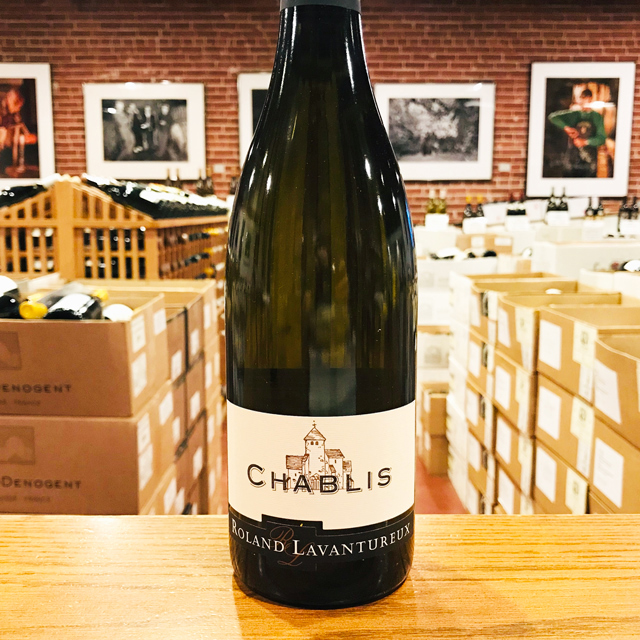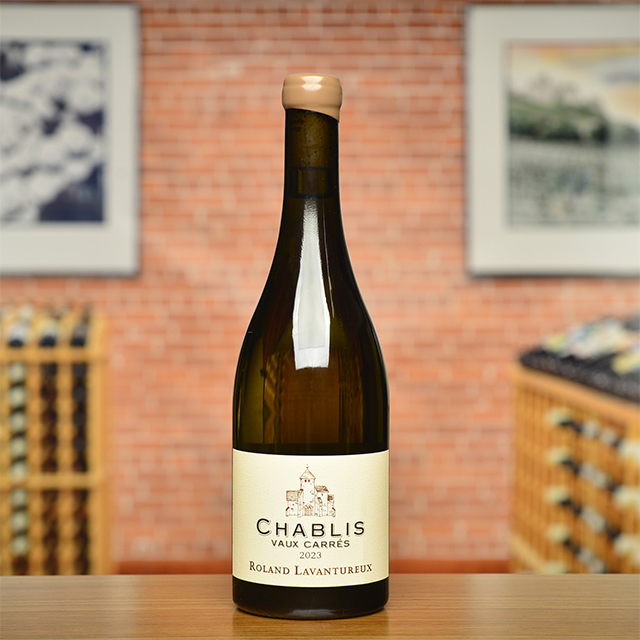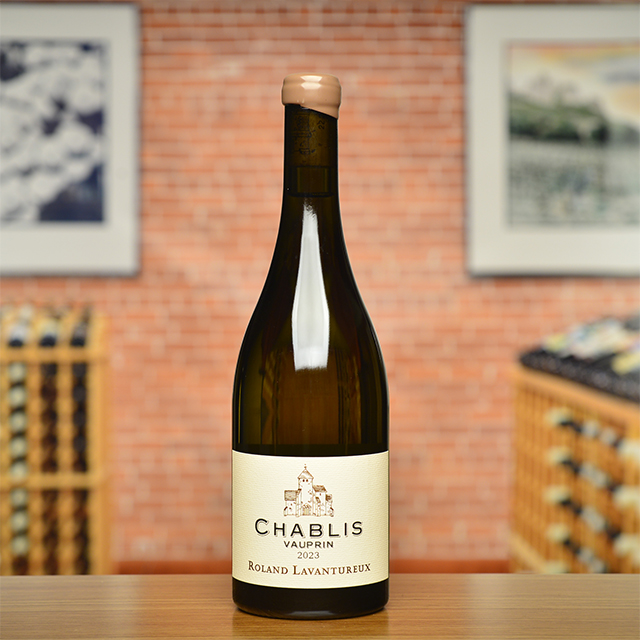Notify me
2019 Chablis
Domaine Roland Lavantureux
Things are changing at Domaine Roland Lavantureux: founder Roland’s sons, Arnaud and David, have joined the family business, and they have begun to implement a number of changes, yielding notable results in improving their already stellar lineup of Chablis. Diligent in their work ethic and full of ambition, the Lavantureux sons have begun working with new vineyard sites, made adjustments in winemaking, and improved the packaging of the domaine’s wines for a slightly classier presentation. While they have already earned numerous awards and accolades for their work, the real results can be tasted in the bottle. As you’ll see, the wine is a crystal-clear translation of the Kimmeridgian limestone of Chablis—Chardonnay the way it can only taste from these soils. In addition to its crisp, saline finish, you’ll find rich, layered fruit and impressive length on the palate. Make way for the new generation!
—Anthony Lynch
| Wine Type: | white |
| Vintage: | 2019 |
| Bottle Size: | 750mL |
| Blend: | Chardonnay |
| Appellation: | Chablis |
| Country: | France |
| Region: | Burgundy |
| Producer: | Domaine Roland Lavantureux |
| Winemaker: | Arnaud and David Lavantureux |
| Vineyard: | 30 years average, 14.5 ha |
| Soil: | Clay, Limestone (Kimmeridgian) |
| Farming: | Lutte Raisonnée |
| Alcohol: | 12.5% |
More from this Producer or Region

2023 Chablis 1er Cru “Beauroy”
France | Burgundy
The premier cru Beauroy is a round, ample expression of Chablis from a south-facing parcel. Silky and suave on the palate, it finishes with a whisper of salinity.

2023 Chablis 1er Cru “Vau de Vey”
France | Burgundy
David Lavantureux describes it as “direct and pure, full of energy”—a perfectly steely Chablis for oysters-on-the-half-shell.

2023 Chablis “Vaux Carrés”
France | Burgundy
A crystal-clear translation of the Kimmeridgian limestone of Chablis—Chardonnay the way it can only taste from these soils.

2022 Bourgogne Tonnerre
France | Burgundy
Displaying both the oyster shell quality we love about Chablis and the sunny orchard fruit notes that make Bourgogne blancs so delicious.

2023 Chablis “Vauprin”
France | Burgundy
Vauprin showcases Chardonnay’s ability to produce a wine that is simultaneously both round and taut in this mighty northern Burgundian terroir.

2022 Chablis “Vieilles Vignes”
France | Burgundy
Everything about this cuvée, from the delicately briny scent of slick oyster shells to the concentrated, pristinely focused sensation on the palate, is a demonstration of why this domaine has become one of Chablis’ very best.

2023 Chablis “Vieilles Vignes”
France | Burgundy
Everything about this cuvée, from the delicately briny scent of slick oyster shells to the concentrated, pristinely focused sensation on the palate, is a demonstration of why this domaine has become one of Chablis’ very best.

2023 Chablis 1er Cru “Fourchaume”
France | Burgundy
This stellar cuvée features generous flesh enveloping a wiry core, with a flinty edge that leads to a satisfyingly creamy finish.

2022 Bourgogne Epineuil “Les Fauconniers”
France | Burgundy
A wine of striking finesse that shows off the crunchy red fruit, floral notes, and peppery spice typical of Pinot Noir from Burgundy’s far north.

2023 Petit Chablis “Les Grenouillères”
France | Burgundy
With a delectable combination of fresh fruit and oyster-shell aromatics, this remains Lavantureux’s benchmark for value and typicity.
About The Producer
Domaine Roland Lavantureux
With a sharp eye, natural instinct, and solid, Burgundian pragmatism, Roland Lavantureux is making no-nonsense Chablis that has come to be one of the most reliable of the old reliables here at Kermit Lynch Wine Merchant. Upon his completion of wine school in Beaune, Roland founded the domaine in 1978. Today, he is joined by his two sons, Arnaud works in the vineyards and cellar, while David takes the lead in marketing and sales. In addition to making a stunning Chablis, the Lavantureux family also bottles a Petit Chablis, two premier crus, and three grand crus
About The Region
Burgundy

In eastern central France, Burgundy is nestled between the wine regions of Champagne to the north, the Jura to the east, the Loire to the west, and the Rhône to the south. This is the terroir par excellence for producing world-class Pinot Noir and Chardonnay.
The southeast-facing hillside between Dijon in the north and Maranges in the south is known as the Côte d’Or or “golden slope.” The Côte d’Or comprises two main sections, both composed of limestone and clay soils: the Côte de Nuits in the northern sector, and the Côte de Beaune in the south. Both areas produce magnificent whites and reds, although the Côte de Beaune produces more white wine and the Côte de Nuits more red.
Chablis is Burgundy’s northern outpost, known for its flinty and age-worthy Chardonnays planted in Kimmeridgian limestone on an ancient seabed. Vézelay is a smaller area south of Chablis with similar qualities, although the limestone there is not Kimmeridgian.
To the south of the Côte de Beaune, the Côte Chalonnaise extends from Chagny on its northern end, down past Chalon-sur-Saône and encompasses the appellations of Bouzeron in the north, followed by Rully, Mercurey, Givry, and Montagny.
Directly south of the Chalonnaise begins the Côte Mâconnais, which extends south past Mâcon to the hamlets of Fuissé, Vinzelles, Chaintré, and Saint-Véran. The Mâconnais is prime Chardonnay country and contains an incredible diversity of soils.
More from Burgundy or France
2011 Meursault-Charmes 1er Cru
Antoine Jobard France | Burgundy
2023 Bourgogne Pinot Beurot “Les Grands Poisots”
Domaine Lucien Boillot et Fils France | Burgundy
2016 Meursault-Blagny 1er Cru “La Genelotte”
Comtesse de Chérisey France | Burgundy
2022 Pouilly-Fuissé “Les Reisses Vieilles Vignes”
Domaine Robert-Denogent France | Burgundy
2022 Marsannay Blanc “Les Longeroies”
René Bouvier France | Burgundy
2022 Irancy
Benoît Cantin France | Burgundy
2022 Nuits-Saint-Georges “Vieilles Vignes”
Domaine Robert Chevillon France | Burgundy
2023 Bourgogne Côte d’Or Rouge
Domaine Pierre Guillemot France | Burgundy
2023 Bourgogne Epineuil
Domaine Savary France | Burgundy
2022 Savigny-Lès-Beaune “Les Grands Picotins”
Domaine Pierre Guillemot France | Burgundy
2023 Mâcon-Villages
Domaine Robert-Denogent France | Burgundy
2016 Puligny-Montrachet 1er Cru “Hameau de Blagny”
Comtesse de Chérisey France | Burgundy
2011 Meursault-Charmes 1er Cru
Antoine Jobard France | Burgundy
2023 Bourgogne Pinot Beurot “Les Grands Poisots”
Domaine Lucien Boillot et Fils France | Burgundy
2016 Meursault-Blagny 1er Cru “La Genelotte”
Comtesse de Chérisey France | Burgundy
2022 Pouilly-Fuissé “Les Reisses Vieilles Vignes”
Domaine Robert-Denogent France | Burgundy
2022 Marsannay Blanc “Les Longeroies”
René Bouvier France | Burgundy
2022 Irancy
Benoît Cantin France | Burgundy
2022 Nuits-Saint-Georges “Vieilles Vignes”
Domaine Robert Chevillon France | Burgundy
2023 Bourgogne Côte d’Or Rouge
Domaine Pierre Guillemot France | Burgundy
2023 Bourgogne Epineuil
Domaine Savary France | Burgundy
2022 Savigny-Lès-Beaune “Les Grands Picotins”
Domaine Pierre Guillemot France | Burgundy
2023 Mâcon-Villages
Domaine Robert-Denogent France | Burgundy
2016 Puligny-Montrachet 1er Cru “Hameau de Blagny”
Comtesse de Chérisey France | Burgundy
Kermit once said...

Kermit once said...
If you're looking for value, look where no one else is looking.
Inspiring Thirst, page 211
















